Yuankun Tang
Time and Frequency Offset Estimation and Intercarrier Interference Cancellation for AFDM Systems
Oct 19, 2023

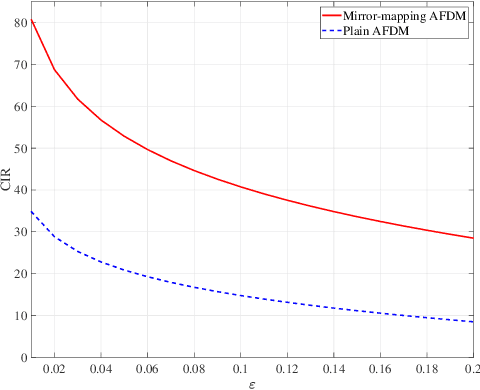
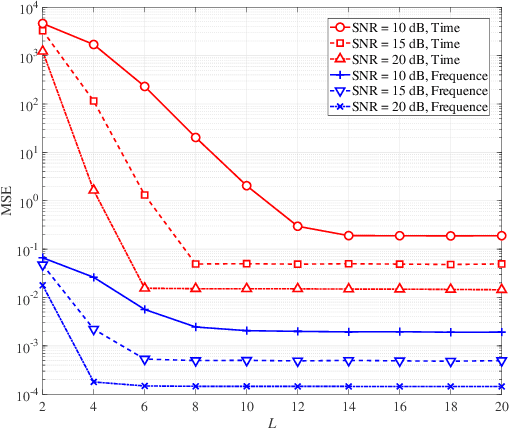
Abstract:Affine frequency division multiplexing (AFDM) is an emerging multicarrier waveform that offers a potential solution for achieving reliable communication for time-varying channels. This paper proposes two maximum likelihood (ML) estimators of symbol time offset and carrier frequency offset for AFDM systems. The joint ML estimator evaluates the arrival time and frequency offset by comparing the correlations of samples. Moreover, we propose the stepwise ML estimator to reduce the complexity. The proposed estimators exploit the redundant information contained within the chirp-periodic prefix inherent in AFDM symbols, thus dispensing with any additional pilots. To further mitigate the intercarrier interference resulting from the residual frequency offset, we design a mirror-mappingbased scheme for AFDM systems. Numerical results verify the effectiveness of the proposed time and frequency offset estimation criteria and the mirror-mapping-based modulation for AFDM systems.
Low Complexity First: Duration-Centric ISI Mitigation in Molecular Communication via Diffusion
Jul 19, 2022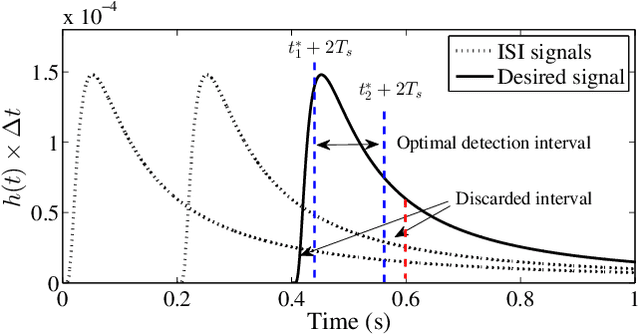
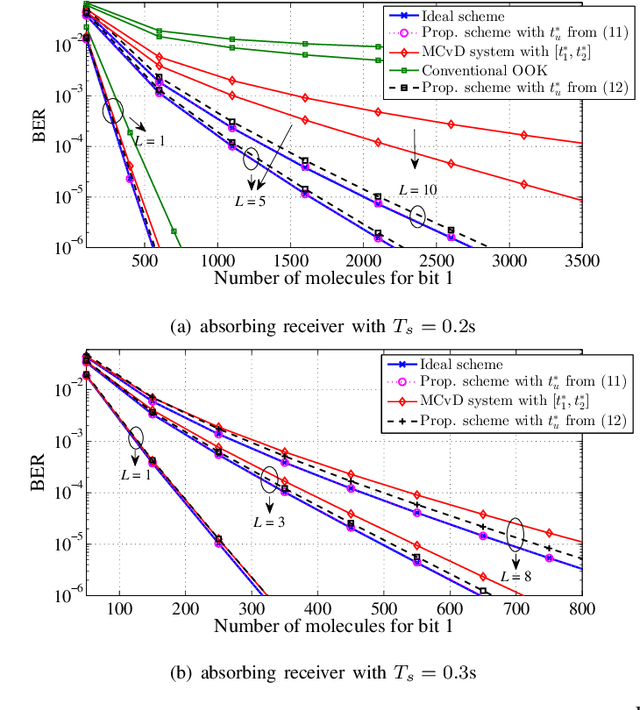
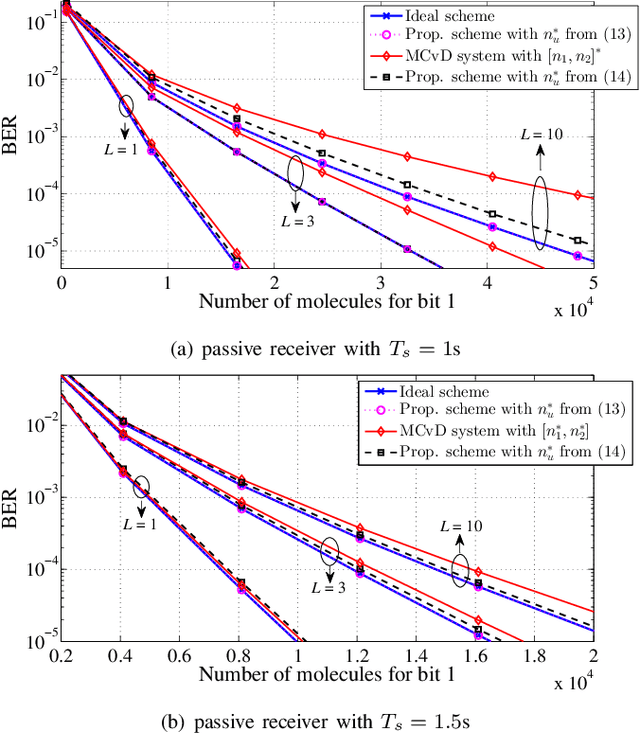

Abstract:In this paper, we propose a novel inter-symbol interference (ISI) mitigation scheme for molecular communication via diffusion (MCvD) systems with the optimal detection interval. Its rationale is to exploit the discarded duration (i.e., the symbol duration outside this optimal interval) to relieve ISI in the target system. Following this idea, we formulate an objective function to quantify the impact of the discarded time on bit error rate (BER) performance. Besides, an optimally reusable interval within the discarded duration is derived in closed form, which applies to both the absorbing and passive receivers. Finally, numerical results validate our analysis and show that for the considered MCvD system, significant BER improvements can be achieved by using the derived reusable duration.
Detection Interval for Diffusion Molecular Communication: How Long is Enough?
Apr 19, 2022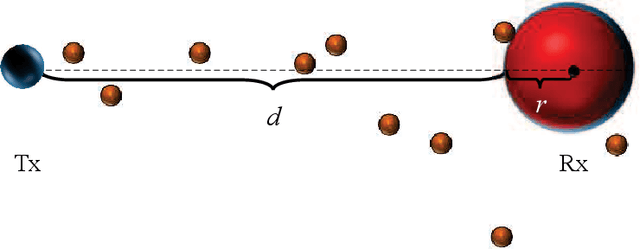
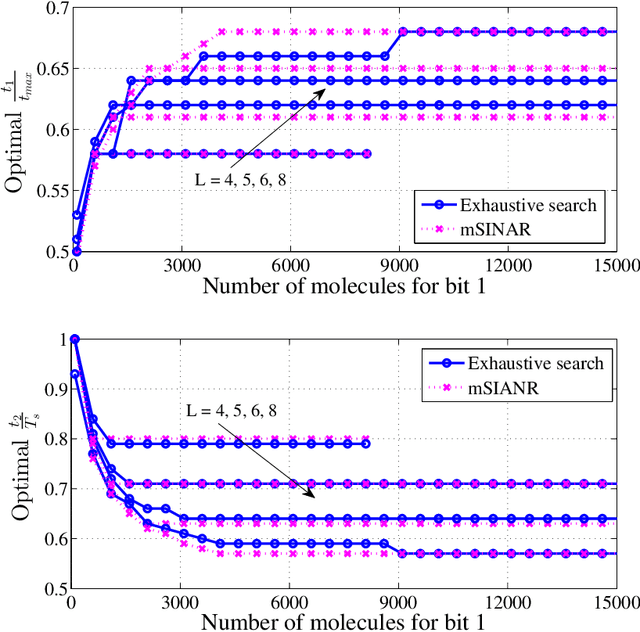
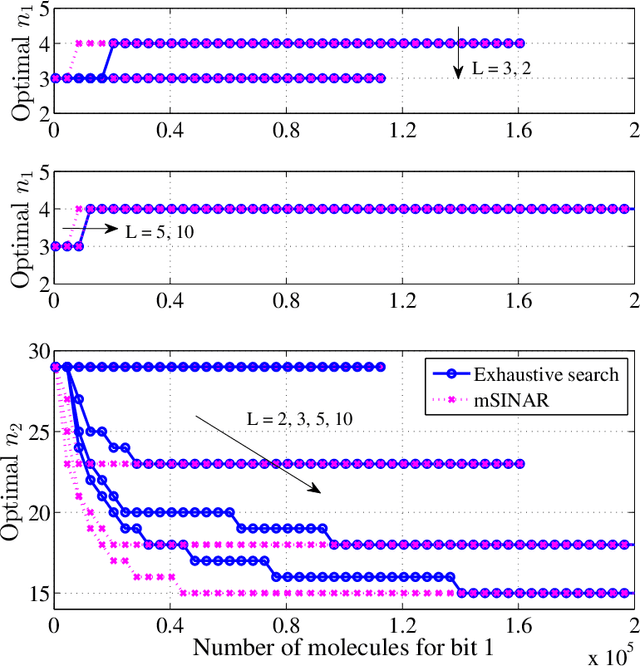
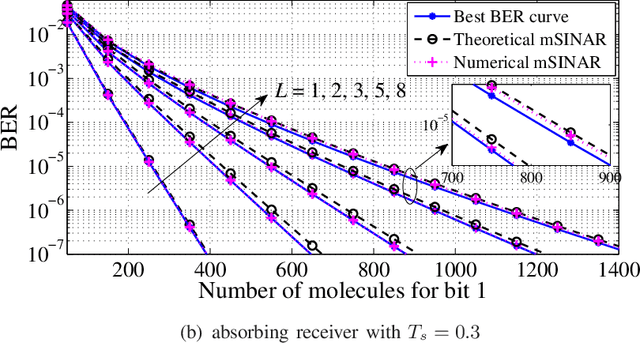
Abstract:Molecular communication has a key role to play in future medical applications, including detecting, analyzing, and addressing infectious disease outbreaks. Overcoming inter-symbol interference (ISI) is one of the key challenges in the design of molecular communication systems. In this paper, we propose to optimize the detection interval to minimize the impact of ISI while ensuring the accurate detection of the transmitted information symbol, which is suitable for the absorbing and passive receivers. For tractability, based on the signal-to-interference difference (SID) and signal-to-interference-and-noise amplitude ratio (SINAR), we propose a modified-SINAR (mSINAR) to measure the bit error rate (BER) performance for the molecular communication system with a variable detection interval. Besides, we derive the optimal detection interval in closed form. Using simulation results, we show that the BER performance of our proposed mSINAR scheme is superior to the competing schemes, and achieves similar performance to optimal intervals found by the exhaustive search.
Ultrasonic Backscatter Communication for Implantable Medical Devices
Feb 14, 2022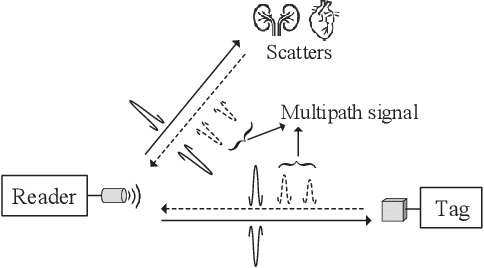
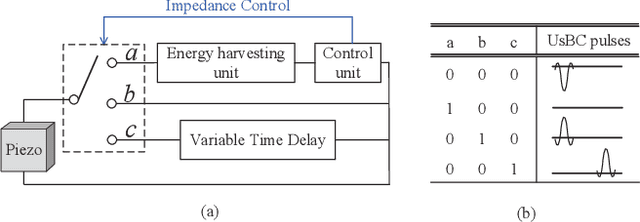
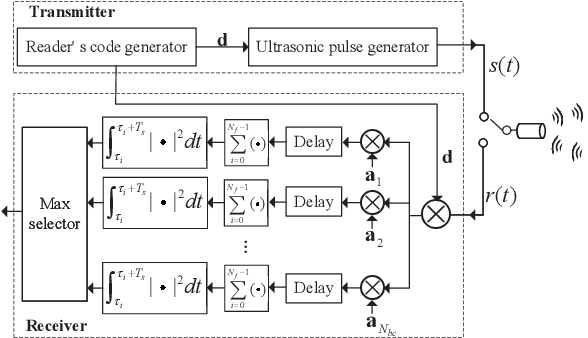
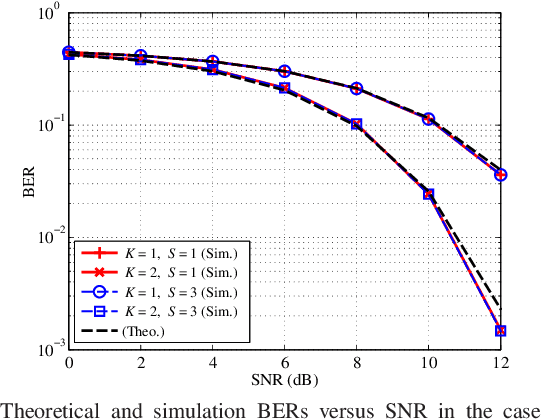
Abstract:This paper proposes an ultrasonic backscatter communication (UsBC) system for passive implantable medical devices (IMDs) that can operate without batteries, enabling versatile revolutionary applications for future healthcare. The proposed UsBC system consists of a reader and a tag. The reader sends interrogation pulses to the tag. The tag backscatters the pulses based on the piezoelectric effect of a piezo transducer. We present several basic modulation schemes for UsBC by impedance matching of the piezo transducer. To mitigate the interference of other scatters in the human body, the tag transmits information bits by codeword mapping, and the reader performs codeword matching before energy detection in the reader. We further derive the theoretical bit-error rate (BER) expression. Monte Carlo simulations verify the theoretical analysis and show that passive UsBC can achieve low BER and low complexity, which is desirable for size- and energy-constrained IMDs.
 Add to Chrome
Add to Chrome Add to Firefox
Add to Firefox Add to Edge
Add to Edge